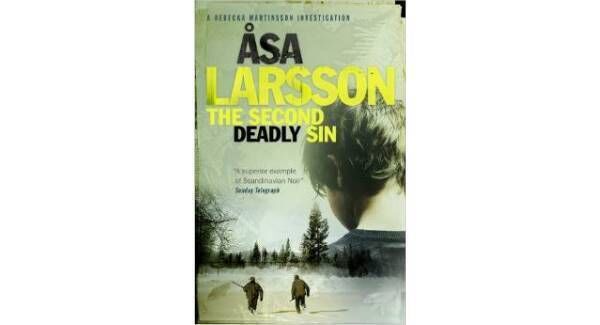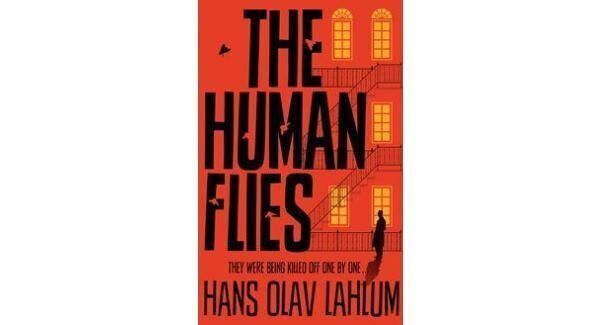Scandinavian crime novels light up dark days

WINTER months without sunshine and summer days without night; the vast empty stretches of Arctic tundra and the teeming, poly-cultural capitals of Stockholm, Oslo and Copenhagen; the liberal laws and open-arms relationship with immigrants and refugees coupled with a tendency to inner melancholy and a love-hate relationship with the demon booze.
Such are the tropes we encounter again and again in Scandinavian (or Nordic) noir, and with good reason: the vivid contrasts of Scandinavia renders it an ideal setting for the crime novel, with its emphasis on the black-and-white divisions between evil and good.
Åsa Larsson’s fifth novel, The Second Deadly Sin, is a prime example of all that is celebrated in Scandinavian crime fiction.

Set in a rural area near Kiruna in the far north of Sweden, where Larsson herself was raised, it’s a police procedural investigation into the murder of a local widow, who appears to have been bludgeoned to death with a hay-fork. Leading the investigation is police inspector Anna-Maria Mella, aided by district prosecutor Rebecka Martinsson — even if Martinsson, at war with her superior von Post, has officially walked off the job.
As the pair advance their investigation, they discover that members of a particular family have been dying in unusual circumstances for a number of years; meanwhile, a separate narrative strand, a love story set during the early years of WWI, lays down the foundations for the murders that will occur almost a century later.
Strong on the police procedural aspects of the story — Larsson was herself a tax lawyer before she began writing fiction, a profession she shares with her heroine Rebecka Martinsson — the tale revels in its incidental details: the merging of Swedish, Norwegian and Lapp cultures in the far north; the hardy self-sufficiency of its characters (the story opens with a hunt after a bear turns rogue); the way in which the locals come together over food and especially drink. For all the community spirit, however, there’s also a pervasive sense of existential angst.
Mella craves a female friend; Martinsson, the ideal candidate, is absorbed in her own loneliness; a character tells Martinsson that, “I sometimes feel as if I don’t have any emotions left in my body.”
It’s nowhere as chillingly bleak a tale as the Norwegian author Karin Fossum’s I Can See in the Dark (2014), which was an absorbing account of a sociopath’s descent into ultimate darkness, but there is nevertheless a strong sense of the kind of ennui and social detachment we often associate with Nordic noir.
The heroine of Kati Hiekkapelto’s debut novel, The Hummingbird, is similarly estranged from society, albeit for very different reasons: a detective with the Finnish police service, Anna Fekete was born in Serbia of Hungarian ethnicity.

Championed as an example of the inclusiveness of Finnish culture, Anna experiences a tough first day on the job when a jogger is apparently shot at random with a hunter’s rifle, and her department also receives a call from a terrified Kurdish girl claiming that she is about to be murdered in an ‘honour killing’.
A police procedural again provides the framework for the investigation and provides Hiekkapelto the opportunity to explore the extent to which Finnish society is (or isn’t) a mature, pluralist country when it comes to integrating its immigrant population, a theme which has occupied Swedish and Norwegian crime authors for a number of decades — Swedish author Arne Dahl’s ‘Intercrime’ series of 10 novels being a good example, the most recent of which published in English was To the Top of the Mountain (2014).
Arne Dahl’s series harks back, of course, to the great Maj Sjöwall and Per Wahlöö, who wrote the iconic Martin Beck series of novels during the 1960s and 1970s. Serious in tone and intent (notwithstanding that the ironically titled The Laughing Policeman won the Edgar Award in 1971), the Beck novels not only set the bar high for Swedish and subsequently Scandinavian crime authors, they also established a sombre mood and a meticulous methodology. Hence the overwhelming preference for the police procedural novel in Nordic noir, to the point where Karin Fossum’s standalone psychological thrillers, or Jo Nesbo’s blackly comic crime capers, are very much an exception to the unwritten rule.
Behind God’s Back is Harri Nykänen’s second novel to feature Helsinki police detective Ariel Kafka, although as the name of his protagonist suggests, Harri Nykänen’s take on Nordic noir is a little unconventional.

One of only two Jewish policemen in Helsinki, Kafka is given the job of investigating what appears to be the assassination of a prominent member of the city’s Jewish community.
The relatively slim novel is jam-packed with incident, as Kafka quickly finds himself embroiled in a conspiracy involving the Russian mafia, the Finnish secret service, Mossad and a cabal of even dodgier-than-usual international bankers. What sets Nykänen’s police procedural apart, however, is the first-person delivery from Ariel Kafka, his laconic style, lone wolf persona and Chandleresque wisecracks rendering him closer — in genre terms — to a classic gumshoe than a contemporary police detective.
Fiercely proud of his Jewish heritage, yet scrupulously neutral when it comes to the rituals and religious observance, Ariel Kafka is an acerbically funny counterpoint to the more conventional, noble but almost invariably po-faced Scandinavian cop.
Humour also plays a hugely important part in Norwegian author Hans Olav Lahlum’s debut The Human Flies, which is another police procedural (set in Oslo) but is otherwise an unusual Nordic noir in many respects.

To begin with, the story takes place in 1968, and takes pains to celebrate its old-fashioned style — chapters, for example, are given baroque titles such as ‘The Princess of Erling Skjalgsson’s Street and Her Sensational Discoveries’. Confronted by what he describes as a ‘closed-room mystery’ when he discovers an apparent suicide that can only be murder (an entire household heard the fatal shot, but there is no gun in the room when the police gain access), Detective Inspector Kolbjørn Kristiansen immediately refers to literary history, citing the theories of Sherlock Holmes and Agatha Christie.
Moreover, ‘the Princess of Erling Skjalgsson’s Street’ is Patricia Borchmann, a young, frail wheelchair-bound genius reminiscent of Rex Stout’s Nero Wolfe, who skulks in her library and interprets the evidence on Kristiansen’s behalf, sending him out into the world to root around for clues.
The comic flourishes are by no means the most important aspect of The Human Flies, which evolves into a deftly constructed locked-room mystery that has its roots in the Norwegian resistance to Nazi occupation during WWII. Nevertheless, the humour — as is the case with Harri Nykänen’s Behind God’s Back — is something of a breath of fresh air, given the serious overtones we associate with Scandinavian noir.
Kolbjørn Kristiansen is funny not only because he is a literary throwback to what we imagine to be a gentler, kinder age, but also in the way the determined, diligent but hapless detective is fully aware of his intellectual failings as he flounders through his investigation.
That self-effacing quality of humour might seem on the surface rather whimsical and out of place in a crime novel, which in its more serious incarnation tends to probe the sickest parts of society, but it’s a useful reminder that in literary terms at least, laughter can be every bit as effective a medicine as justice served.











